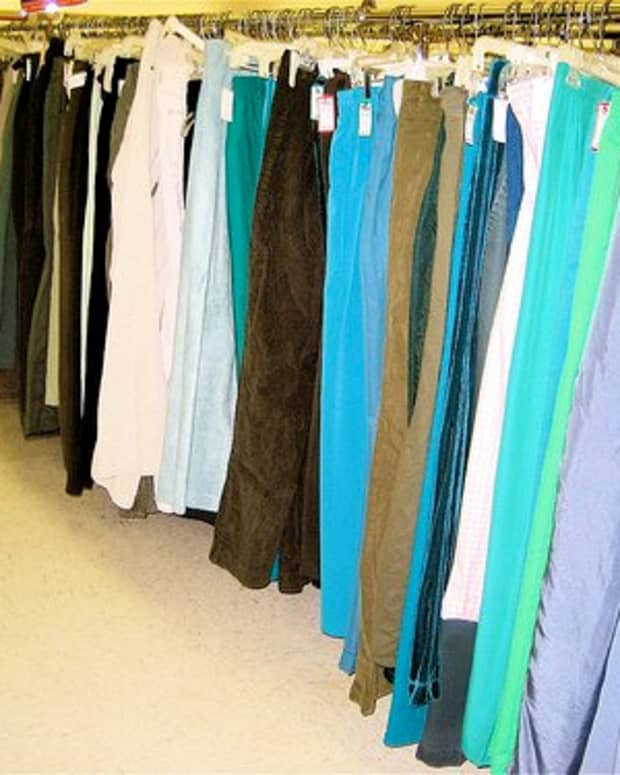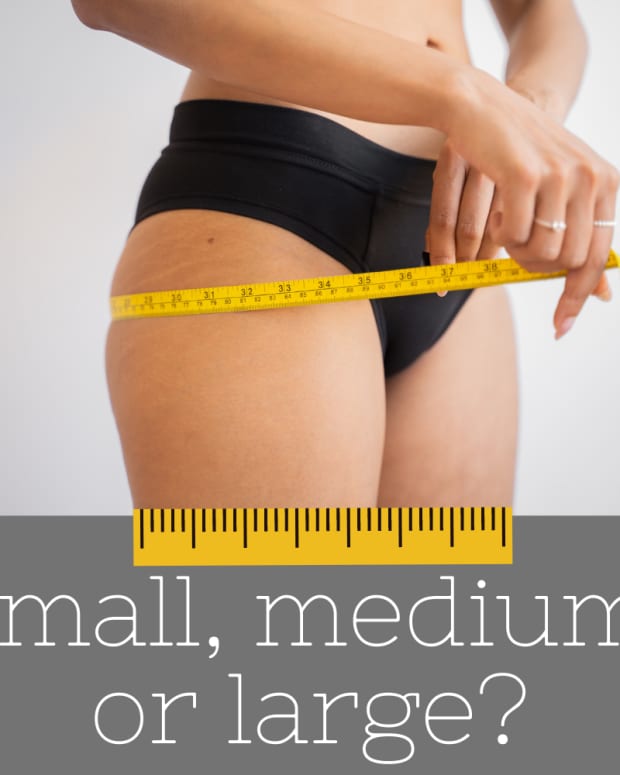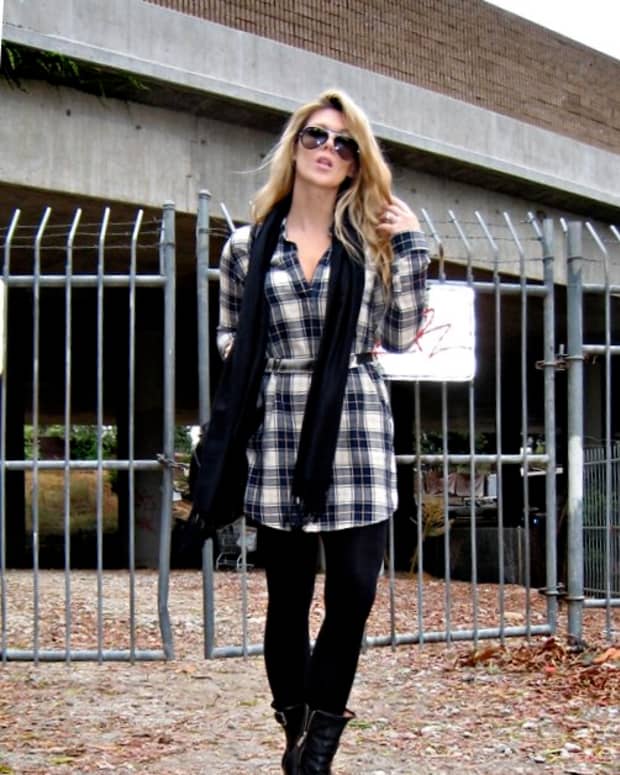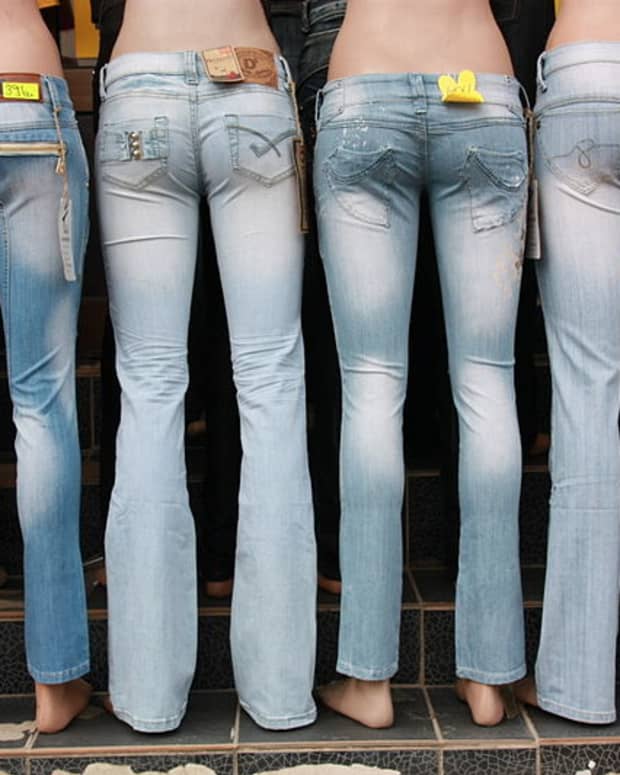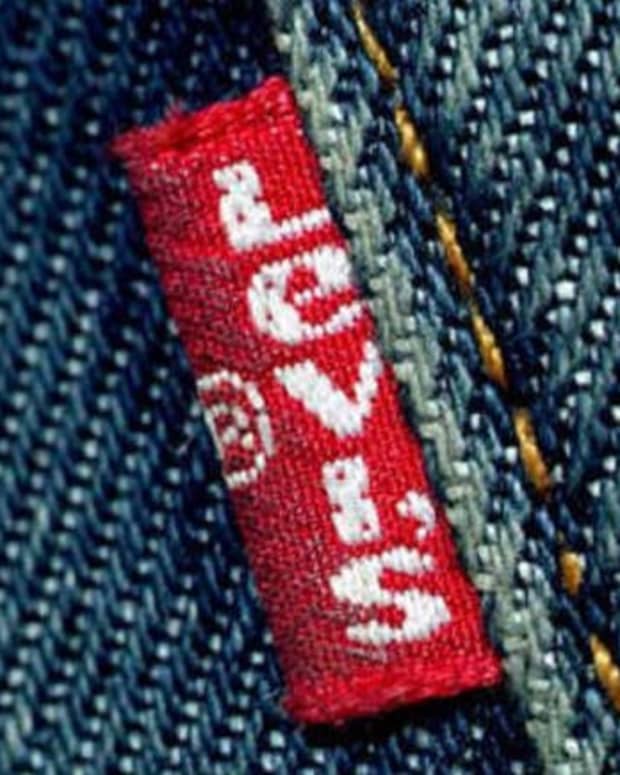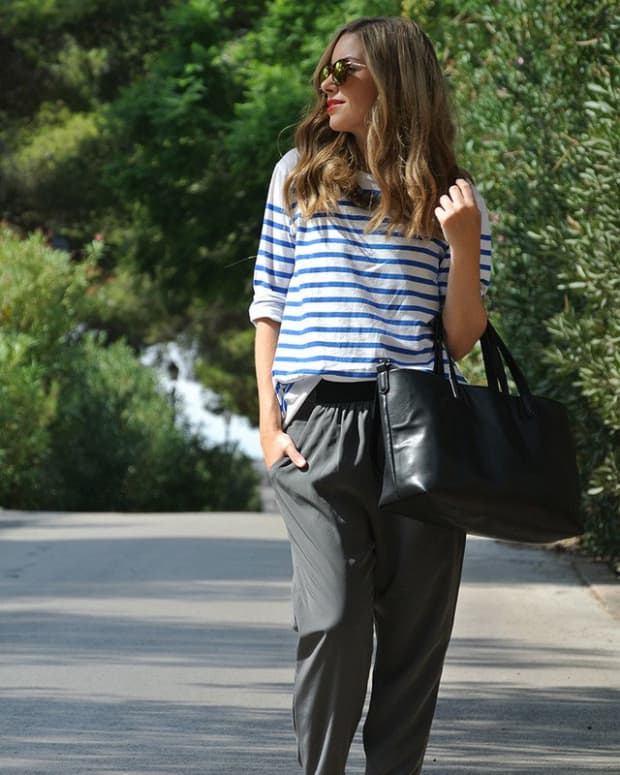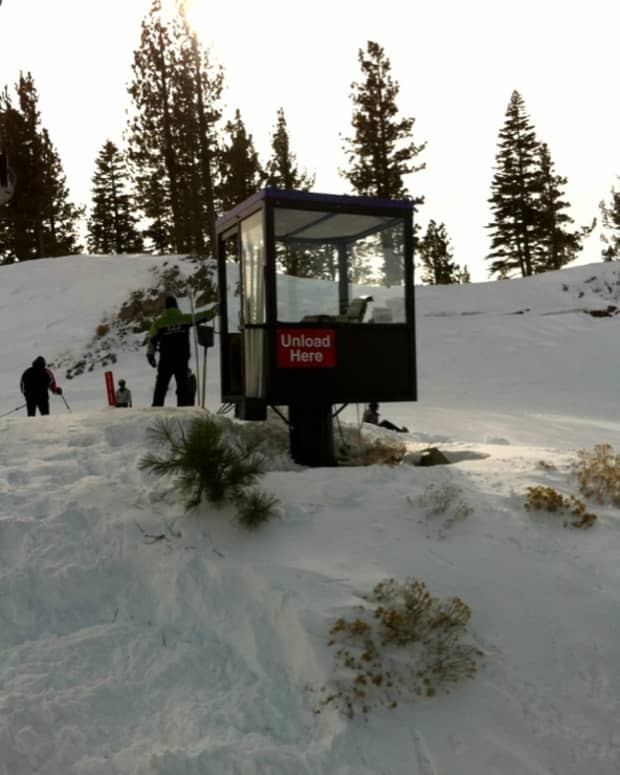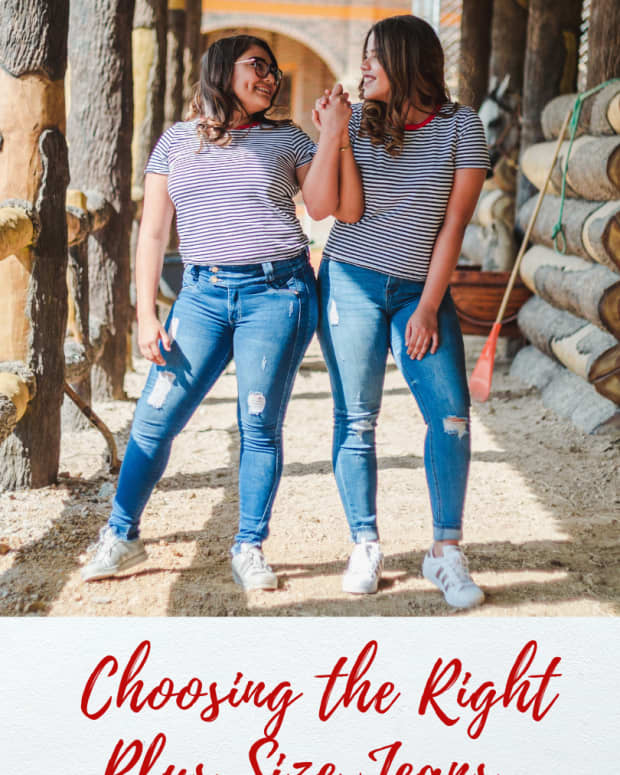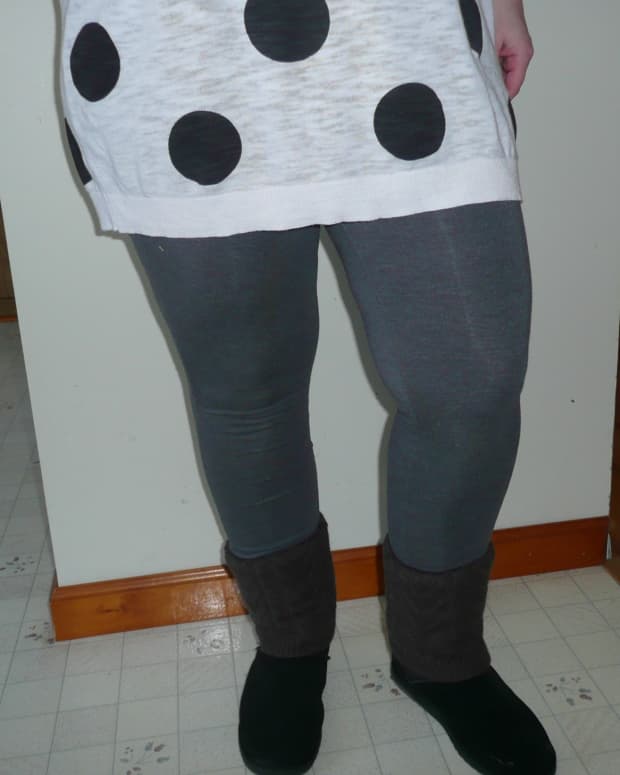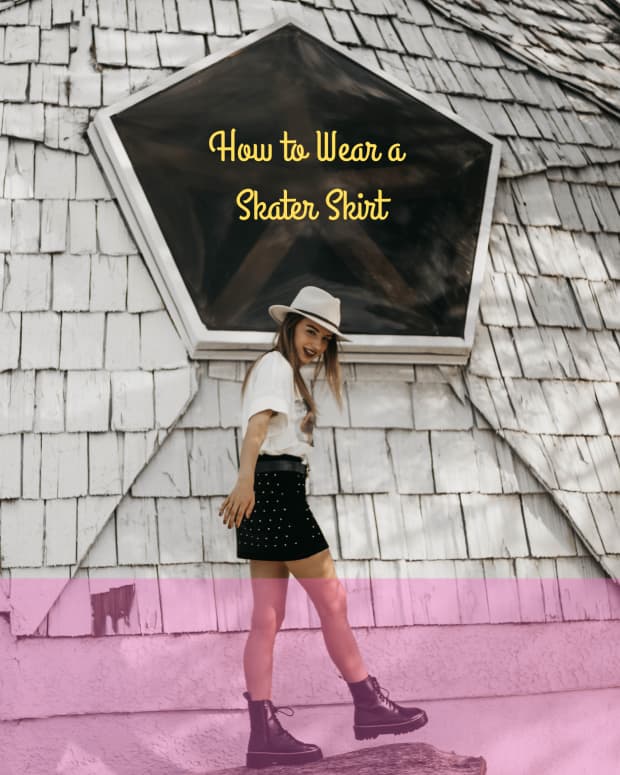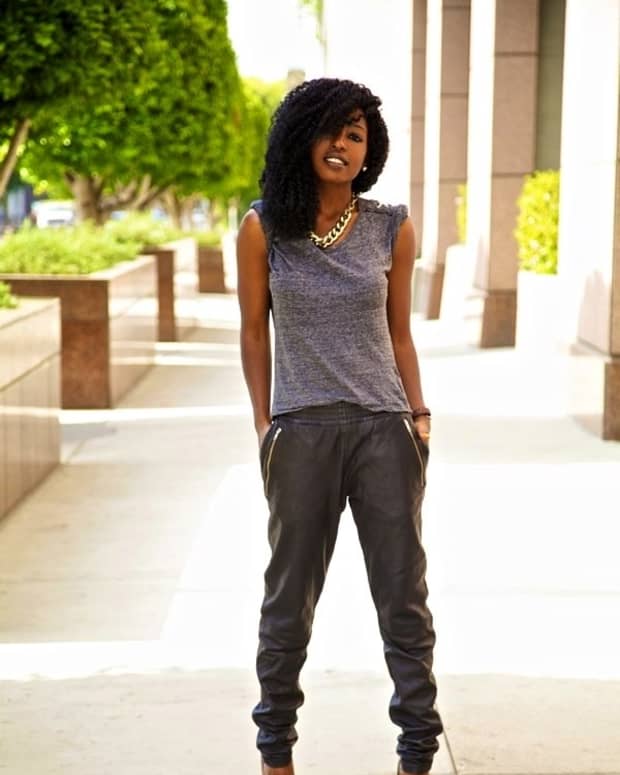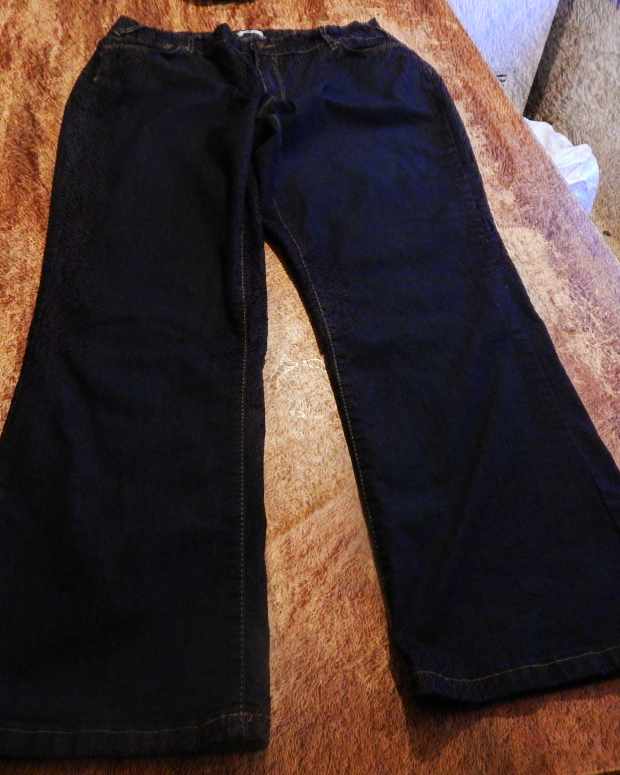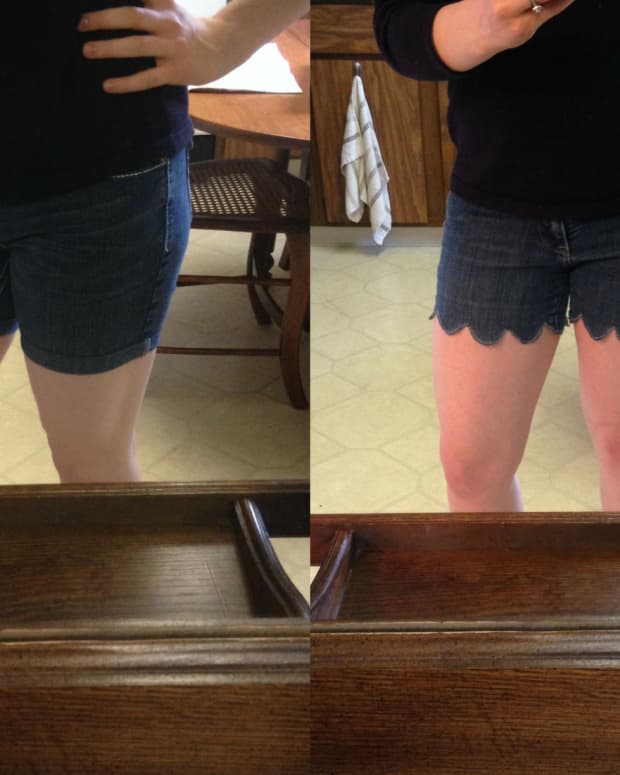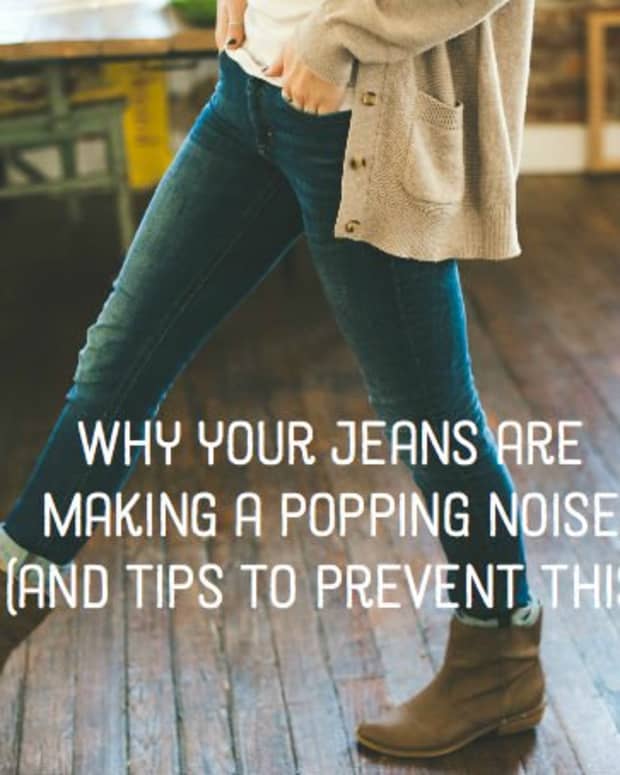What Size Pants Do I Wear? (With Conversion Charts)
Having worked in retail, I know how difficult it can be to decipher size tags. Hence this handy pant-size guide!
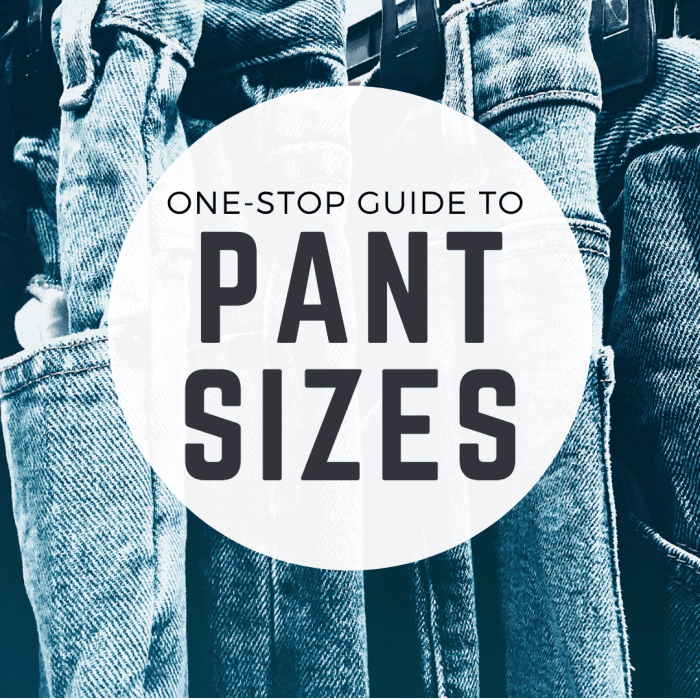
Finding the perfect pair of pants is no easy feat, but understanding the way they're sized and the other fit factors that come into play certainly helps.
Understanding Women's Pants Sizes
Buying a pair of pants shouldn't be rocket science, but in this day and age, finding a pair that actually fits well seems a whole lot more complicated than it should. From confusing combinations of numbers to a seemingly endless number of fits, rises, and degrees of stretch, how is one to find the right pair of pants?
In this article, we will discuss everything you need to know about women's pants, from W/L sizes and conversion charts to fit, rise, stretch, and what it means for a pair of pants to be "tall." We'll even go over some foolproof tips for buying pants online (and getting it right the first time around!).

From the meaning of "29 x 33" to how pant sizes convert from one country to another, we've got you covered.
W/L Pant Sizes Explained
Has anyone ever walked into a clothing store and seen a pair of pants with sizing that looks like a math problem? 28 x 33? What does that mean? Let's look at this "equation" another way.
Pant sizes listed as 28 x 33, 28/33, or W28/L33 refer to waist width (W) and leg length (L). So how do you figure out what your W and L are?
How to Measure Your Waist and Inseam
- Waist (W): Starting at the top of your hip bone, bring the tape measure around your body, keeping level with your belly button. Keep the tape measure straight and even, and do not attempt to pull it tight. Exhale and check the number.
- Leg Length/Inseam (L): Fold your best-fitting pants lengthwise on a flat surface and measure from the crotch seam to the hem. OR, wearing a pair of close-fitting pants (e.g. athletic pants or tight jeans), have someone measure from your crotch seam to the floor.
Here is a little cheat sheet if you do not want to attempt the math, though if you want pants that truly fit well, it's worth taking the time to do the measurements.
Note: Bear in mind that the charts below show average sizes and conversions; in order to get a better idea of how a particular pair of pants will fit, consult that brand's size chart.
Women's Pants Size Chart (Waist/Hips)
| US Size | Waist (Inches / Centimeters) | Hips (Inches / Centimeters) |
|---|---|---|
00 | 24–25 in / 61–63.5 cm | 33–34 in / 84–86.5 cm |
0 | 26 in / 66 cm | 34–35 in / 86.5–89 cm |
2 | 27 in / 68.5 cm | 35–36 in / 89–91.5 cm |
4 | 28 in / 71 cm | 36–37 in / 91.5–94 cm |
6 | 29 in / 74 cm | 37–38 in / 94–96.5 cm |
8 | 30 in / 76 cm | 38–39 in / 96.5–99 cm |
10 | 31 in / 79 cm | 39–40 in / 99–101.5 cm |
12 | 32–33 in / 81–84 cm | 40–41 in / 101.5–104 cm |
14 | 34 in / 86.5 cm | 42–43 in / 107–109 cm |
16 | 35–36 in / 89–91.5 cm | 43–44 in / 109–112 cm |
18 | 37–38 in / 94–96.5 cm | 45–46 in / 114–117 cm |
20 | 39–41 in / 99–104 cm | 47–48 in / 119.5–122 cm |
22 | 41–43 in / 104–109 cm | 49–51 in / 124.5–129.5 cm |
Plus Women's Pant Size Chart
| Size | US Size | Waist (Inches / Centimeters) | Hip (Inches / Centimeters) |
|---|---|---|---|
1X | 12W | 36 in / 91.5 | 45 in / 114 cm |
1X | 14W | 38 in / 96.5 cm | 47 in / 119.5 cm |
1X | 16W | 40 in / 101.5 cm | 49 in / 124.5 cm |
2X | 18W | 42 in / 107 cm | 51 in / 129.5 cm |
2X | 20W | 44 in / 112 cm | 53 in / 134.5 cm |
3X | 22W | 46 in / 117 cm | 55 in / 140 cm |
3X | 24W | 48 in / 122 cm | 57 in / 145 cm |
4X | 26W | 50 in / 127 cm | 59 in / 150 cm |
4X | 28W | 52 in / 132 cm | 61 in / 155 cm |
Women's Pants Size Conversion Chart
| Size (US/Canada) | Numeric Size (US/Canada) | Japan | UK / Australia | France | Italy | Spain | Germany |
|---|---|---|---|---|---|---|---|
XXXS | 000 | 1 | 0 | 28 | 32 | 26 | 24 |
XXS | 00 | 1 | 2 | 30 | 34 | 28 | 26 |
XS | 0 | 3 | 4 | 32 | 36 | 30 | 28 |
XS | 2 | 5 | 6 | 34 | 38 | 32 | 30 |
S | 4 | 7 | 8 | 36 | 40 | 34 | 34 |
S | 6 | 9 | 10 | 38 | 42 | 36 | 34 |
M | 8 | 11 | 12 | 40 | 44 | 38 | 36 |
M | 10 | 13 | 14 | 42 | 46 | 40 | 38 |
L | 12 | 15 | 16 | 44 | 48 | 42 | 40 |
L | 14 | 17 | 18 | 46 | 50 | 44 | 42 |
XL | 16 | 19 | 20 | 48 | 52 | 46 | 44 |
XL | 18 | 21 | 22 | 50 | 54 | 48 | 46 |
XXL | 20 | 23 | 24 | 52 | 56 | 50 | 48 |

In addition to determining your size, fit and rise are key factors in finding your perfect pair of pants.
A Quick Guide to Different Pant Fits
Now ladies! Before you buy, remember to also take into account the cut of the jeans! Here's an explanation of several of today's popular cuts.
Junior Fit
A Junior Fit runs pretty small. This cut fits the kind of body that has very little curve anywhere, like a Cameron Diaz body frame. It fits fairly snug all the way down to the calves, and so gives the illusion of a butt to those who need one.
Please, ladies, do not be alarmed if you have to go up a size to find a Junior Fit you can wear; it is okay, it's a Junior Fit.
Regular Fit
A Regular Fit works for many body types. It is usually low-cut and slightly relaxed in the thighs, and it fits the same all the way down. It's relaxed compared to a Junior Fit but tighter than a Boyfriend Fit. A 29 is a 29 in this fit; it's very easy to size!
Boyfriend Fit
Hopefully the name says it all. Men tend to like low-rise jeans that are loose-fitting, due to the extra equipment they have, and many women like these pants too. This is a low-waisted cut, VERY relaxed, but still emphasizing the rear.
This is a great cut for pear-shaped builds or women with athletic thighs. Ladies, this cut can make us feel like we ran a marathon. You can choose a size two sizes smaller than usual with this fit!
Read More From Bellatory
Curvy Fit
This, my friends, is a high-waisted cut, so for all you women with the big booty, don't be afraid—there are pants out there for you!
This fit is generally fuller in the hips and thighs, though it may still be tight through the legs, so if you have thick thighs (go you!) I would avoid this fit. But if you like the snug look, then try this cut on! Typically, you'll want to try one size larger with this fit, unless the material stretches.
Bootcut vs. Flare
"Bootcut" means a little extra room below the knee, and "flare" means more extra room below the knee. Bootcut and flare pants usually fit pretty close above the knee.
Skinny Leg
Skinny-leg pants have a slim fit all the way to the ankle (vs. straight-leg pants, which give the knees and ankles more breathing room). These are a great choice for ladies who to show off their figure!
High- vs. Mid- vs. Low-Rise Pants
- High-Rise: Typically worn above the belly button, well-tailored high rises really show off your curves. But be careful not to get them too tight, as they can cinch sharply at the waist.
- Mid-Rise: This classic fit usually sits a few inches below your waist, but still above your hips, and is typically flattering for most body types. Mid-rise pants provide more rear coverage than low-rise pants (i.e. no visible undies!) without cinching in at the waist.
- Low-Rise: Low-rise pants sit right on the hips, roughly three inches below the belly button, making it the most likely rise to create the dreaded muffin-top effect. But sizing up to prevent squeezing only increases the likelihood of exposing your undies, so tread carefully with this rise.
If you're still experimenting with cuts and rises, here are some tips on how to find the best pants for your body type.

But wait, there's more! Stretch and height-sizing are two more things to consider when shopping for pants.
Different Types of Stretch in Denim
Who knew shopping for a pair of pants could be so complicated? In addition to waist, inseam, fit, and rise, you also have to account for stretch!
Raw Denim
Also known as dry or unwashed denim, raw denim is not subject to any washing or distressing prior to being made into jeans. It goes straight from the loom to the sewing machine to the shelf.
This type of denim is unique in that it will stretch and mold to your unique shape (right down to the creases) . . . as long as you abide by the breaking-in process. In order to get shrink-to-fit jeans to mold to your body, some sites recommend that you abstain from washing them for a whopping six months after the initial sizing wash! If you're an STF first-timer, here's a guide on how to break in raw denim jeans.
Note: When it comes to raw denim jeans, it's critical to buy the right size. It's recommended that you size up accordingly.
100% Cotton Denim
100% cotton denim will always stretch, and washing/drying them on hot will only shrink them temporarily (not to mention shorten their lifespan in the long run). If you want 100% cotton jeans, you have three options:
- buy them really small, then wet-stretch them;
- go for a slouchy fit to begin with;
- or buy a used pair at your local thrift store.
98/2 Stretch Blends
Denim made of 98% cotton and 2% elastane/lycra still stretch, but not as badly as 100% cotton denim. With these, your best bet is to buy them quite tight and wait for them to stretch as you wear them (ouch!).
Note: Unlike with 100% cotton denim, washing and drying 98/2 jeans on hot is an absolute no-no. Whereas it temporarily stretches the former, it will damage the elastic in the latter, meaning they'll be even baggier than they were before.
Cotton/Poly Blends
These blends, usually comprised of 60% cotton and 40% polyester, are less popular than they used to be, but you may still see them out there from time to time. This kind of denim is fairly stiff, so while it tends to hold its shape and resist stretching out, it isn't the comfiest to wear.
4-Way-Stretch Denim
This type of denim is designed to stretch in four different directions, then snap right back to its original shape. Jeans made from this material tend to be super comfy and stretchy, but without any bagginess after wear.
Super Stretch (Jeggings)
While super-stretch jeggings might feel just like your favorite pair of yoga pants, they are likely to stretch and get baggy, just like the first two types of denim on this list. You may fare okay if you buy super-stretch jeans from a high-end brand, but even then, a quality brand is no guarantee with this material; you might end up shelling out your hard-earned cash for a pair of jeans that will have a baggy booty before you know it.
Other Stretchy Fabrics Used for Pants
| Fabric | Characteristics |
|---|---|
Polyester | strong, durable, quick-drying, and able to stretch while retaining its shape |
Nylon | strong, soft, resilient, and very elastic |
Spandex | lightweight, strong, and very elastic |
Cotton Jersey Knit | soft and breathable, 2-way stretch fabric |
Stretch Cotton | soft and breathable |
Stretch Silk Crepe | crisp, yet soft, with a good ability to hold shape |
Stretch Wool | soft, durable, warm, and wrinkle resistant |
Stretch Velvet | soft and durable |
Petite vs. Regular vs. Tall Pants
These sizes are based on average ranges for short, tall, and average height for women. This can affect length and rise in pants, so it may be worth trying pants in your height category.
- Petite: 5' to 5'3" (152.5 cm to 160 cm)
- Regular: 5'5" to 5'7" (165 cm to 170 cm)
- Tall: 5'8" and above (173+ cm)
Note: If you frequently wear heels, remember to factor that in when deciding whether to go for petite, regular, or tall pants!

You can measure your waist and hips using a pair of pants you already own (multiply each number by two!).
4 Tips for Buying Pants Online
Don't have the time (or desire) to shop for pants in a brick-and-mortar store? There are tons of great options to choose from online, but in order to avoid the frustration of ordering an ill-fitting pair of pants and having to go through the return rigamarole, here are a few helpful tips to follow.
1. Know Your Waist and Hip Measurements
Break out the tape measure and take down your waist and hip size. If you don't have a tape measure, you can use a piece of string (or even a shoelace!) and measure it with a ruler after. Whatever way you choose to do it, knowing your measurements will make shopping for pants online 1000% easier.
2. Measure a Pair a Pants You Already Own
In addition to measuring your own waist and hips, it doesn't hurt to take the measurements of a pair of pants you already know fit great. So grab your favorite pair and do the math. For waist size, measure the back waistband and multiply by 2. For the hip size, measure across the front of the pants at the base of the zipper (see photos above).
3. Consult the Size Chart and Customer Reviews
These days, most companies have their own size charts, and thank goodness for that! Sizes vary so much by brand that it's nigh on impossible to take your pant size from one brand to another and end up with the right size. So instead of going by another brand's pant size, compare your individual measurements with the size chart instead.
It can also help to check what other customers think; some brands even have an easy chart of what reviewers thought of the fit (e.g. true to size, feels a full size too small, feels a half size too big, etc.).
4. Buy Multiple Pairs in Different Sizes
For sites with a hassle-free return policy, it may be worth your time to order the same pair of pants in a couple of sizes. That way, you have a better chance of finding one that fits without multiple exchanges. Just return the pair that doesn't fit!
A Note on "Vanity Sizing"
Part of what makes buying pants (or any item of clothing, for that matter) harder today than it used to be is vanity sizing—a relatively new phenomenon where retailers increase the size of their garments while retaining the same tag (e.g. a pair of pants you think has a 36-inch waist might actually have a 41-inch waist). Unfortunately, this attempt to make customers feel better only ends up making it more difficult to find apparel that fits.
For more on this troubling trend, check out "You've Been Fooled: Vanity Sizing and Why Clothes Don't Fit".
Resources
- Pants Size Conversion Charts + Size Guide for Men & Women.
- Petite, Regular or Tall Sizes. (2012, October 30).
- Stretch Fabric Guide.
- The Different Types Of Stretch In Denim. (2017, May 30).
© 2011 Kschmidt
Comments
Teresa on March 14, 2020:
Just want to know what a 47 inch waist what size pants and not all that stupid extra s***
http://ikinohd.club/ - Bing on February 20, 2020:
Microsoft - Official Home Page
Sarah Mahammad from Minnesota on February 04, 2018:
Your ideas about how we should fit skinny jeans, and what kind of sizes of it we should pick whenever shopping at stores was so helpful for me as an athlete girl, having a beautiful and blessed body that's not too skinny, and yet not curvy in places. I've always known how to pick dresses, active outfits, hoodies, and oats perfectly. But when it comes to picking up skinny jeans, feel confused sometimes about sizing with feeling comfortable in skinny jeans, My skinny jeans size is 3-4 But sometimes pick 5 because I sometime dislike being in a too tight pants. And all my choices so far in skinny jeans were perfectly beautiful on me, as long as I'm staying stand by :) but whenever I sit down on a chair get up, I have to tide me up little bit, so I can continue looking great. It was a long journey of wondering "How can I pick skinny jeans & stay feeling comfortable in it?". And You almost answered my questions about the topic. Just wanted to let you know how thankful I'm for reading your previous articles, and wrote down the numbers, and using them at some stores at MOA!! Items I picked up after your article are so perfect for me, and in the same time feel comfortable. I'm so grateful and thankful and happy that I no longer make sure of my look whenever the class is finished, and I get off the chair. So grateful for finding your answers when I came across the web, googling a long term wondering question about what type of skinny jeans is for me?! Also like to thank you for the valuable side tips of paying attn. to the jeans weight first, then the brand name, then the price at the end. May you already have a wonderful life!! Much Love!!!
MaryParamoure on January 25, 2018:
Do you have size 18 WP pants because I am short. I have trouble finding pants that I do not have to spend money
Michelle on March 24, 2017:
This is not very accurate... I wear a size 4-6 dress, am 5'7"/5'8", and I wear a 28 x 33. I used to be a seamstress; the first number is the measurement of the circumference of your waist/hips, and the second number is what's known as your inseam--the measurement from the ground to your crotch (on the inside of your leg). You really can't guess your waist by adding 20! Especially with pant sizes nowadays!
elizabeth palmer on October 29, 2016:
I'm 5' and I weigh 86 lbs, my work pants say 29 I was wondering what size I would be? And what style would the name of the jeans that are tight in the butt all the way down to the knee then kinda flares out a little?
kadylady520 on August 01, 2016:
I'm sad to see that according to your chart women don't wear pants bigger than size 18! really sad.
maria on May 01, 2015:
Im a 32 waist and 38 hips what size jeans would I wear?
Kschmidt (author) from Texas on September 27, 2011:
I hope it works out! If you have anymore questions then just give me a hollar! Was in retail for awhile :) glad to be here!
Debbie Carey from Riverton, KS, USA on September 26, 2011:
Hmmm....Can't wait to get into the 218 pair of jeans in my office and see how close this is....sounds accurate! Lots of information and very well thought out! Good job and welcome to HubPages! Voted up, useful and interesting! Good luck!!




